- USD
- EUR
- GBP
- AUD
- CAD
- ZAR
The Kruger National Park's inviting picnic spots are ideal for mid-safari pit-stops on privately guided safaris in Kruger. Birdlife is prolific here, and their unique settings make them suitable for observing passing animals in the surrounding landscape. Picnic spots are available throughout Kruger Park.
Need Advice?Picnic spots offer BBQ facilities, and most have a small shop for some essential purchases. Some picnic areas have a basic restaurant that offers a limited selection of quick meals.
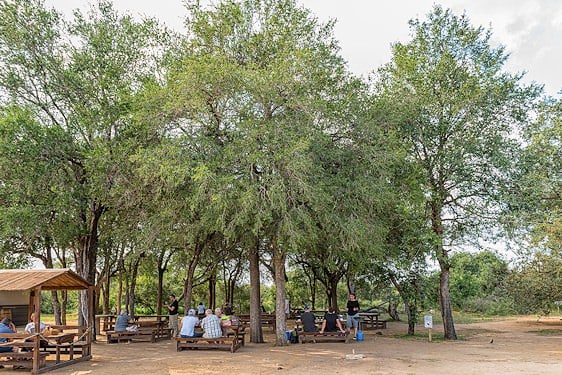
Afsaal is a bustling picnic spot close to the park's southern border. It is a convenient stop with toilets, braai stands, and a shop selling basic prepared meals, drinks, and essential supplies. Afsaal is not fenced, and animals often pass close to the site - we recommend some vigilance when relaxing here.
Animals frequently spotted here include bushbuck, dwarf mongoose, vervet monkeys, chacma baboons, and on occasion, leopards. Regularly seen birds are crested barbet, southern yellow hornbill, blue wax-bill, African scops owl, and African firefinch.
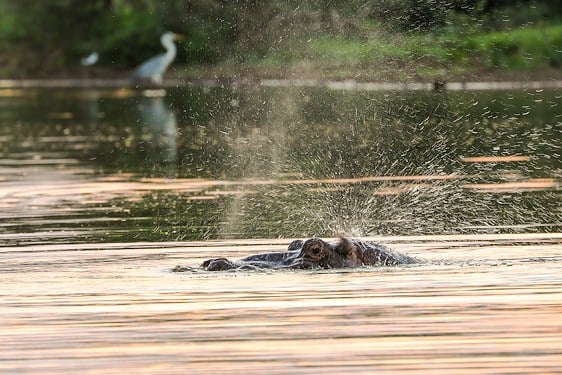
Mlondozi picnic spot is on a hill less than twenty kilometers north of Lower Sabie Rest Camp. The hill's vantage point, as it overlooks the Mlondozi River and dam, makes it a favorite among photographers and birdwatchers. It overlooks a plain and the Lebombo Mountains in the distance.
Buffalo and elephants frequent the river and dam it, fills. Hippos are residents, and crocodiles also frequent the dam. Baboons, waterbuck, and impala are rarely far from the water sources, with rhinos and cheetahs occasionally seen in the area. It is a beautiful birdwatching location.
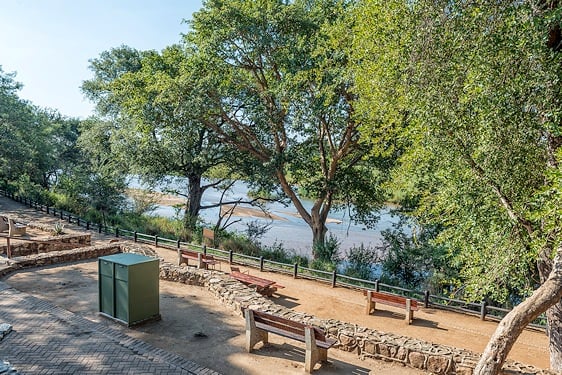
The Nkuhlu picnic spot is the only stopover on the road between Lower Sabie and Skukuza. Nkuhlu is the Swazi name for the Natal Mahogany. Surrounded by giant trees, it is lovely and offers stunning views of the Sabie River.
Popular as a BBQ spot, a small shop provides only the barest essentials and a few basic prepared meals. Many water birds, including the giant kingfisher, goliath heron, and African jacana, are abundant here. The river also attracts large numbers of mammal, especially during the dry season.

Tshokwane is the most popular picnic spot in the Kruger National Park. It is situated centrally between Skukuza, Satara, and Lower Sabie Rest Camps. The picnic spot is large enough to accommodate many visitors and can sometimes be very busy. Most of Kruger's mammals are spotted here from time to time.
Vervet monkeys and baboons can be a nuisance as they endeavor to steal food from visitors - be mindful of their presence. Many birds frequent Tshokswane, starlings, and hornbills, permanently reside here and have become very tame. You will always see tree squirrels in the large trees found here.
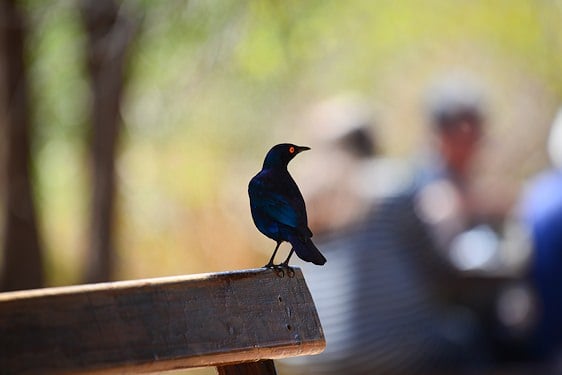
Nhlunguleni is a small picnic site halfway between Skukuza and Orpen rest camps. It is the perfect place to take a break during your morning safari and enjoy a late breakfast prepared on gas barbecues provided. Grazers frequently seen here are blue wildebeest and zebra.
These animals attract predators like leopards and lions. You should also see giraffes, bushbucks, and various species of birds while relaxing at Nhlunguleni. Though not frequently encountered, this part of Kruger has a high cheetah population.
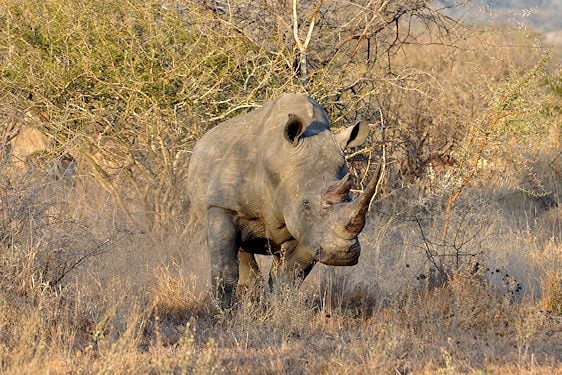
Muzandzeni is an isolated picnic spot roughly 30 km southwest of Satara in the central Kruger National Park. This picnic site is an area with mixed bushwillow woodland vegetation. It offers basic facilities and a place to stretch your legs and visit the bathroom.
There is a possibility to encounter a member of the Big Five here, but you are more likely to spot browsers like kudu, giraffe, and bushbuck. Birdwatchers frequent the area to spot vultures and predatory birds. The most common of these birds are the white-backed, lappet-faced, hooded, and white-headed vultures. Sightings of bateleurs and Wahlbergs eagles will be a highlight.

The N'wanetsi picnic spot and lookout is located in the central Lebombo region, only a couple of miles from the South African border with Mozambique. It overlooks the Sweni river from a comfortable thatched roof lookout with comfortable seating - a feature here is a painted wall depicting various local bird species.
The abundance of trees in this region provides excellent nutrition to browsers. You will likely encounter giraffes, elephants, kudu, waterbuck, and bushbuck. The black rhino frequents this part of the Kruger National Park; it is one of the rarest animals seen on safari in Kruger. Some large bird species like the ostrich, kori bustard, and secretary bird also prefer this region.
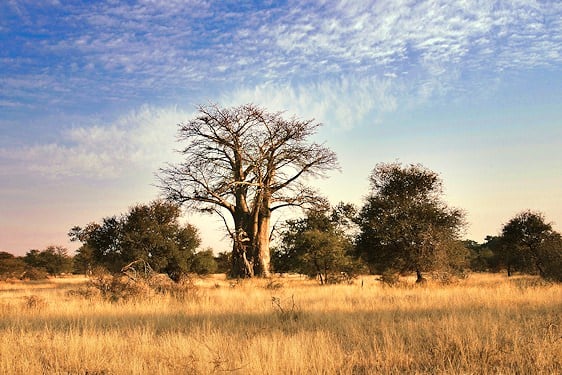
The Timbavati picnic spot is fifteen miles northwest of Satara. One of the main attractions here is an ancient baobab tree not far from the picnic spot. Timbavati offers a perfect view of the Timbavati River and provides ablution facilities, seating shaded by trees, and gas frying pans for those who want to enjoy a hot meal. The resident worker Elias Chauke is a brilliant host and will be able to point visitors to the surrounding wildlife with amazing accuracy.
Bushbuck that have become tame stroll through the site. They present an excellent photographic opportunity; visitors are requested not to feed them under any circumstances.

Makhadzi picnic spot is in Kruger National Park's northern region close to Mozambique's border, about 30km north of Letaba Rest Camp. This picnic spot is a bit out of the way and on a cul-de-sac, limiting visitors to a minimum and providing an excellent location to enjoy the wildlife and surroundings in privacy.
Until 2003 it was still used as a military outpost, subsequently converted into a picnic spot. The spot's history dates back to the Anglo-Boer when British troops were stationed here to prevent the Boers from accessing Mozambique's seaport. The area is rich in wild and birdlife, and many elephants are notable.
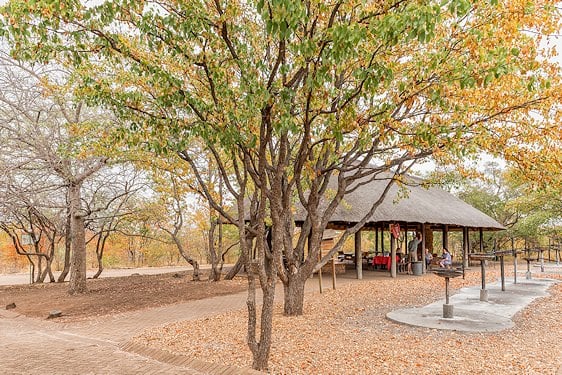
Mooiplaas picnic site is just ten minutes south of Mopani Rest Camp. Due to its proximity to this rest camp, it is often overlooked. Like most picnic sites, it offers essential gas BBQ facilities and a comfortable environment to relax and enjoy a meal. Here you also have the option of purchasing firewood for cooking purposes.
Mooiplaas overlooks the Tsendze River and is an excellent place for spotting hippopotamus, waterbuck, and elephant approaching the river for a drink. A borehole and wind pump also supply an artificial waterhole that attracts large herds of animals during the dry season, such as zebra and wildebeest. This location is ideal for bird watching.
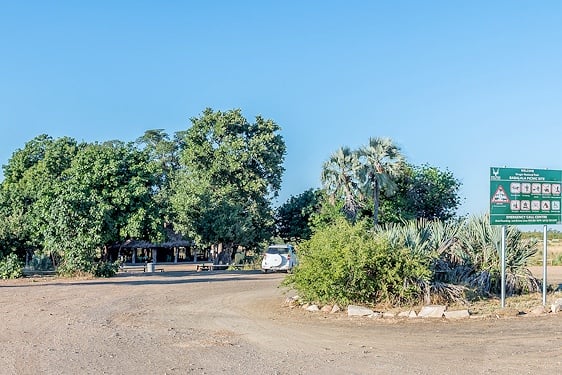
Babalala picnic spot is far north in Kruger, approximately halfway between Punda Maria and Shingwedzi rest camps. It contains all the basic facilities, and the ablution facilities are wheelchair friendly. In the center of the picnic spot is a big, thatched roof area built around a large sycamore fig tree.
Big five sightings are rare, but the area presents the opportunity of spotting animals not often seen in other parts of the park, like eland and cheetah. The northern part of Kruger is rich in birdlife and attracts many avid birders annually.
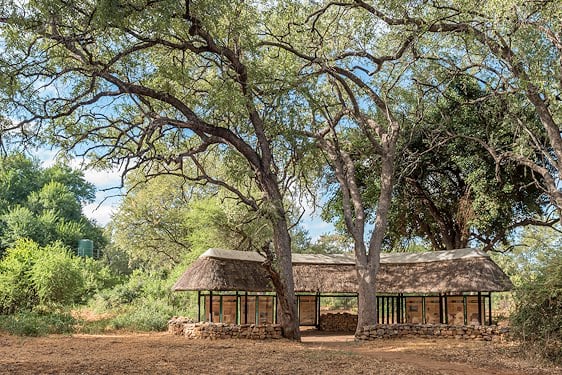
Pafuri picnic spot is on the Luvuvhu River in the northern reaches of the Kruger National Park. All the primary areas have plenty of shade to hide from the harsh African sun. On the ablution facilities, there is a mark indicating the extreme flood level of 2000.
This area's vegetation is very diverse. Anna trees and dense bush surround the picnic spot. Lush greenery and an abundance of water attract many birds. The area is rated as one of the best birding destinations in South Africa. Two hundred fifty-seven bird species include rare birds like the narina trogon and trumpeter hornbill.





This website uses cookies. To learn more about how we use cookies, please view our Privacy Policy. By clicking "I Accept" on this banner, you consent to the use of cookies unless you have disabled them.